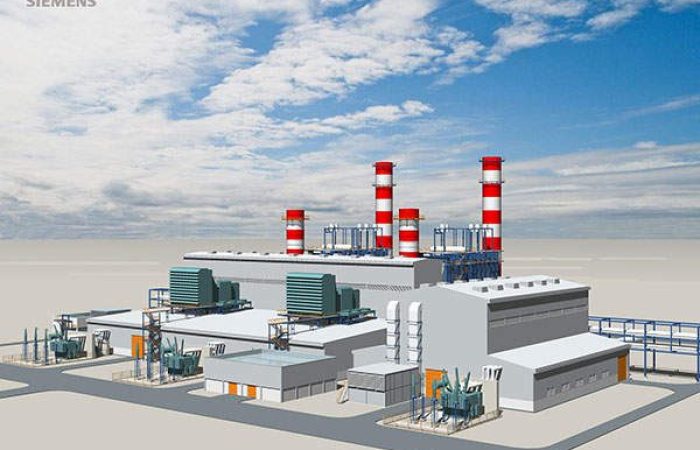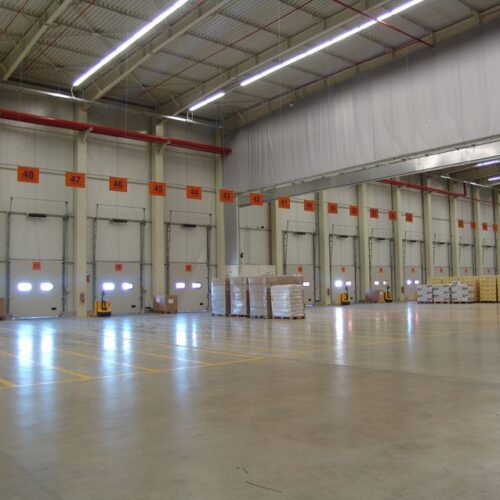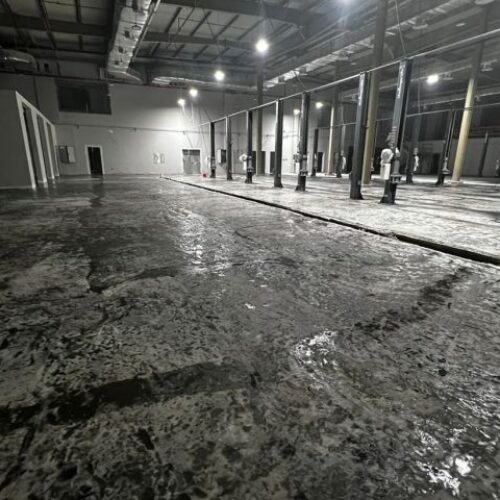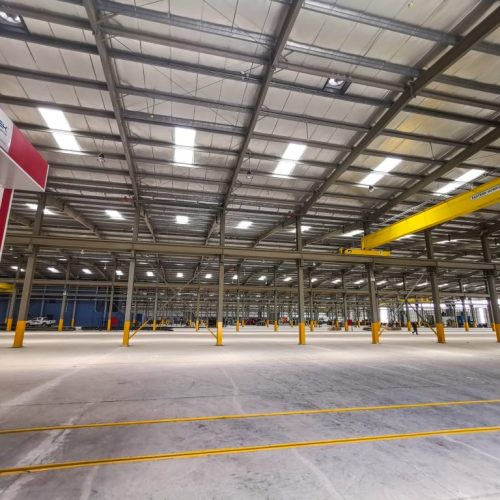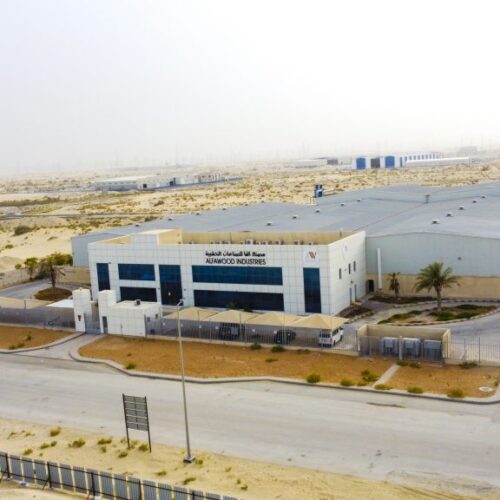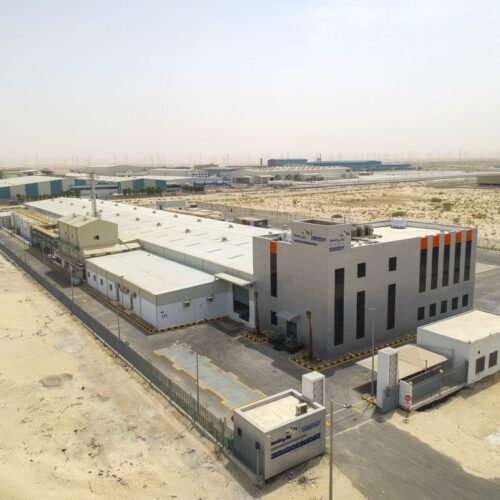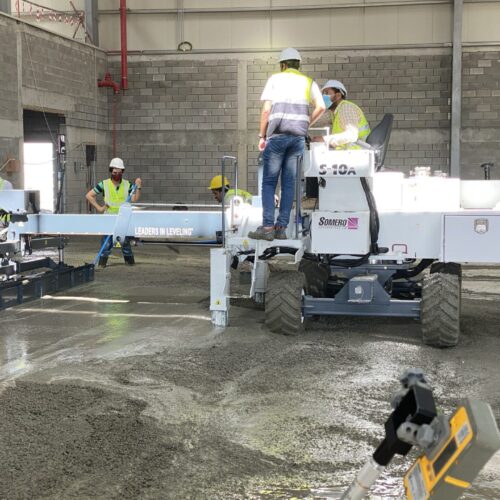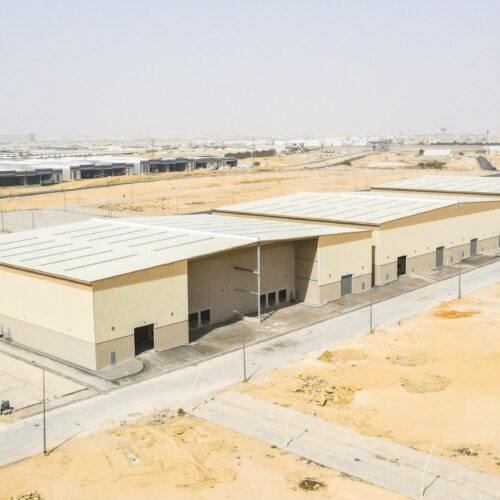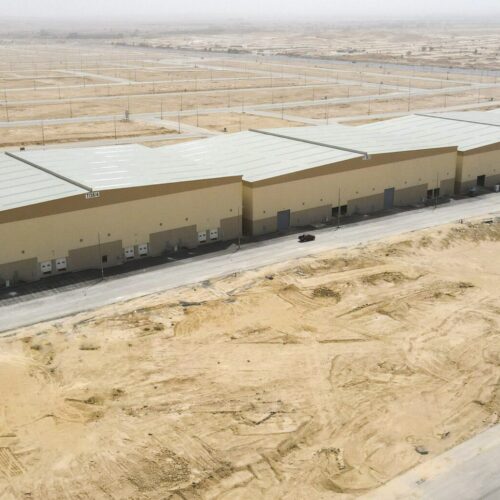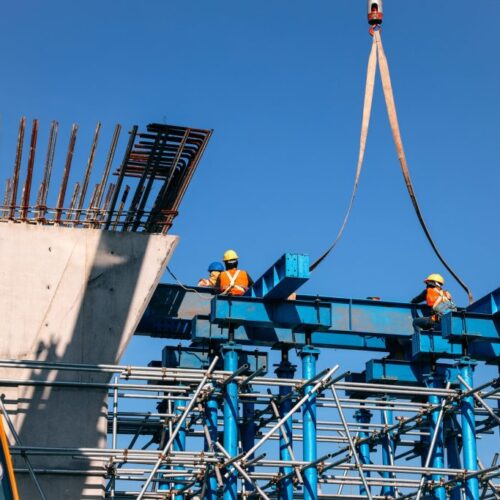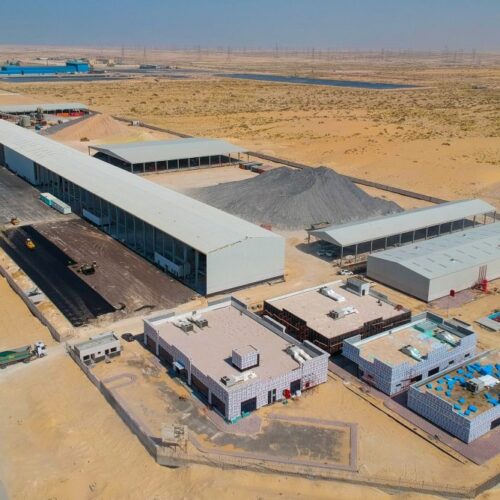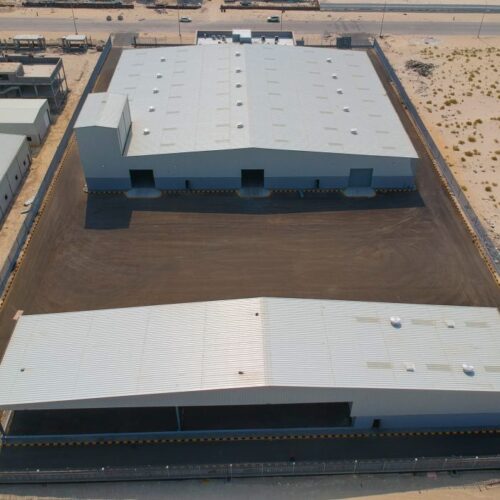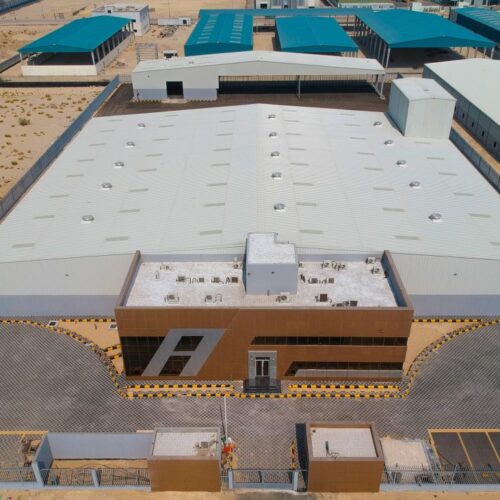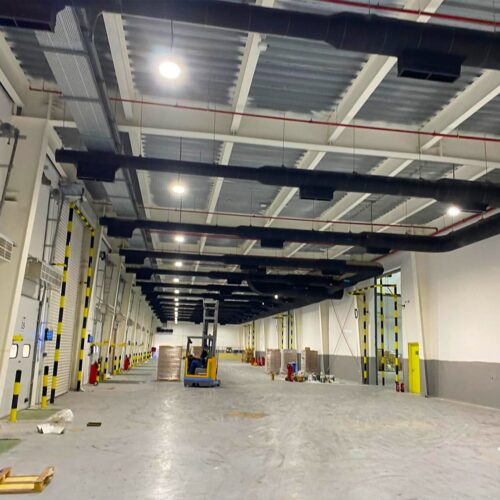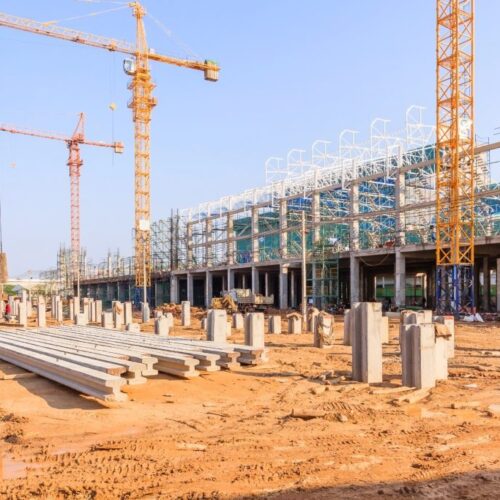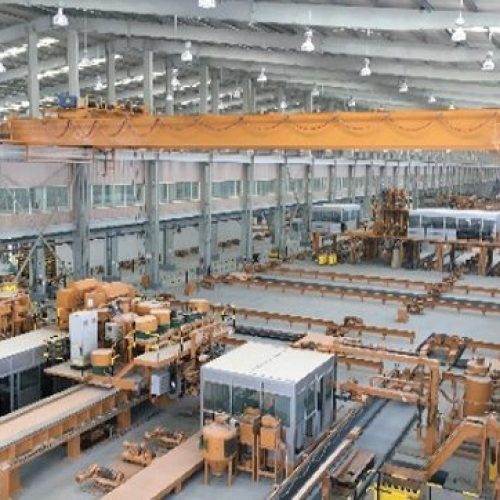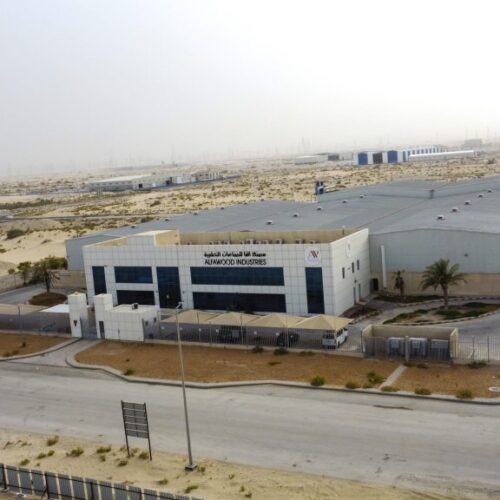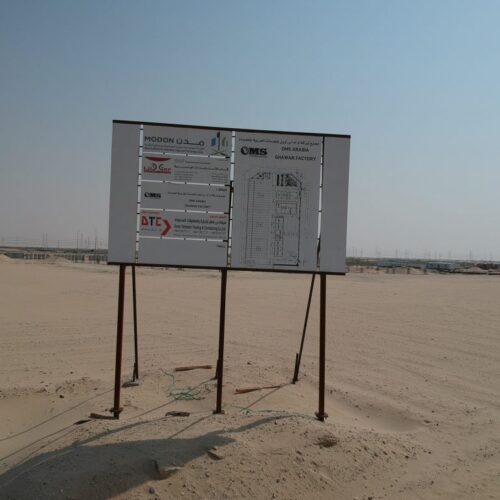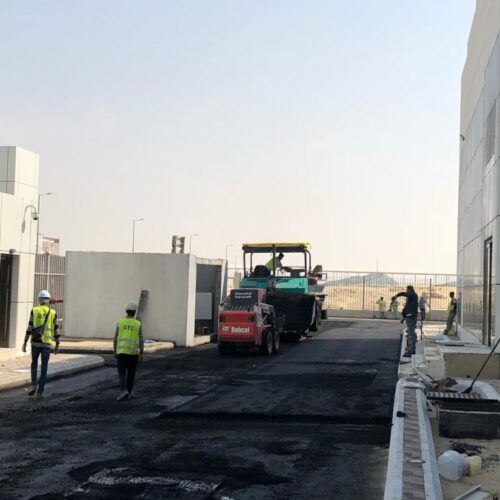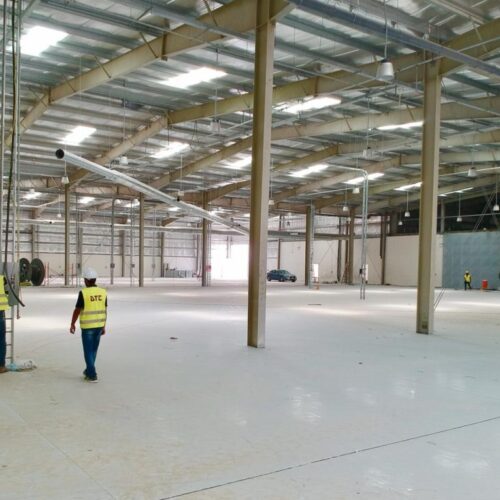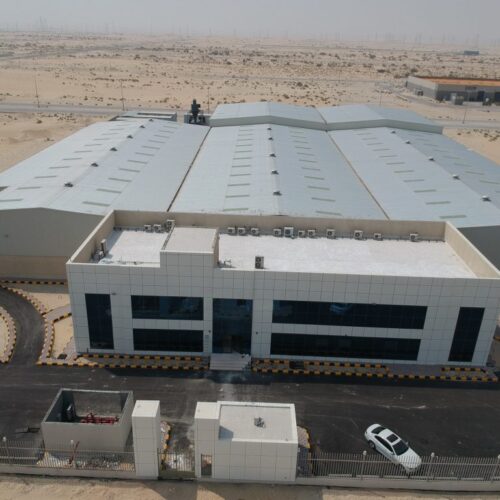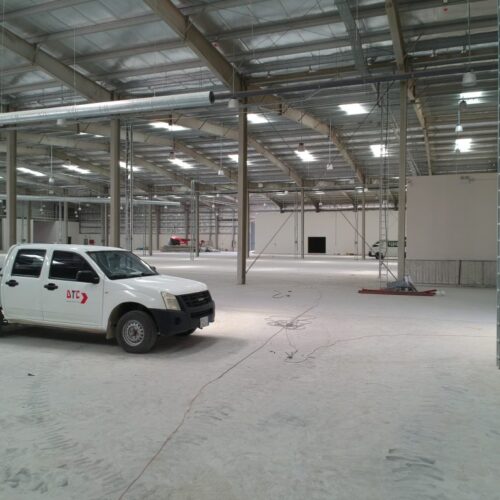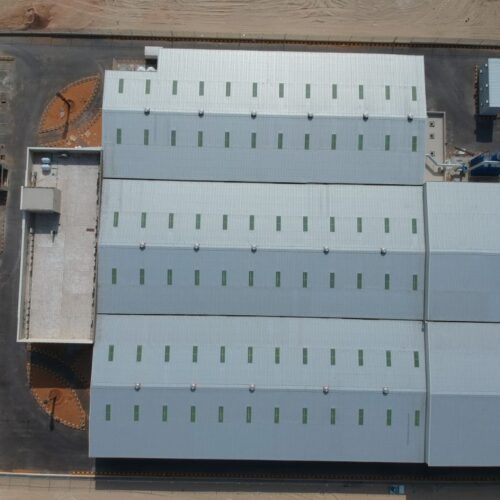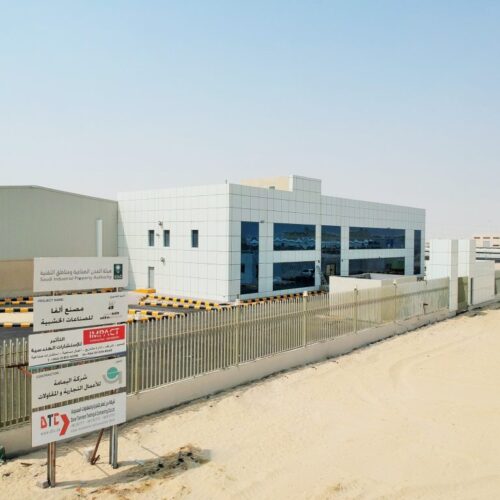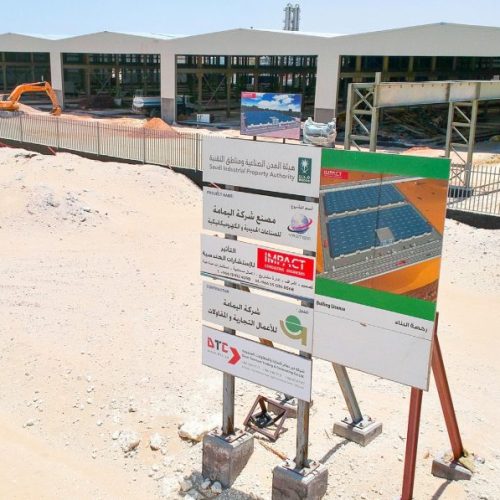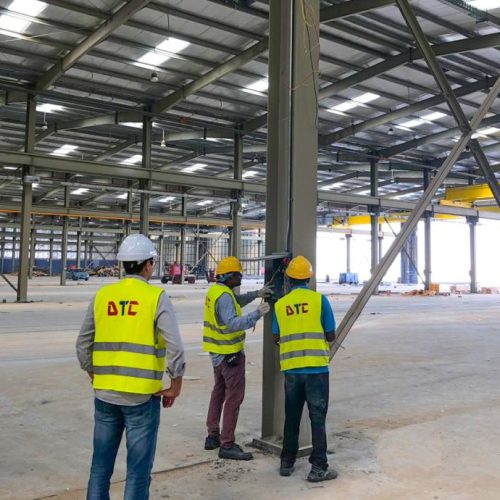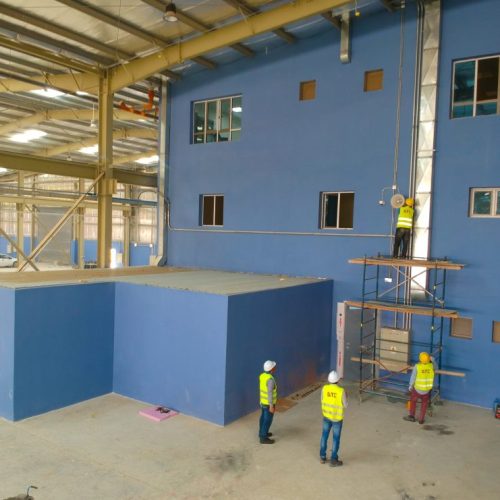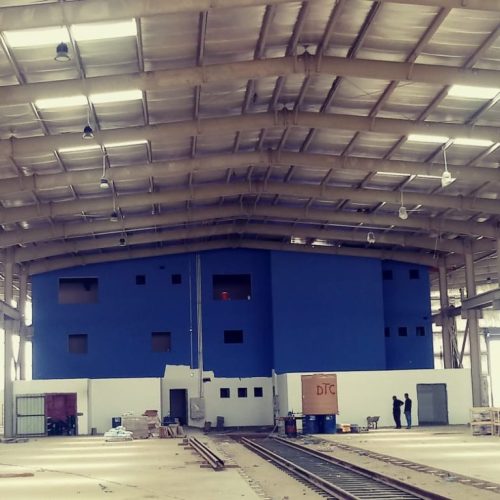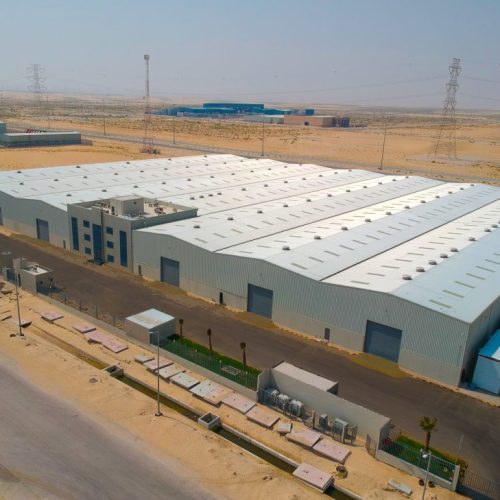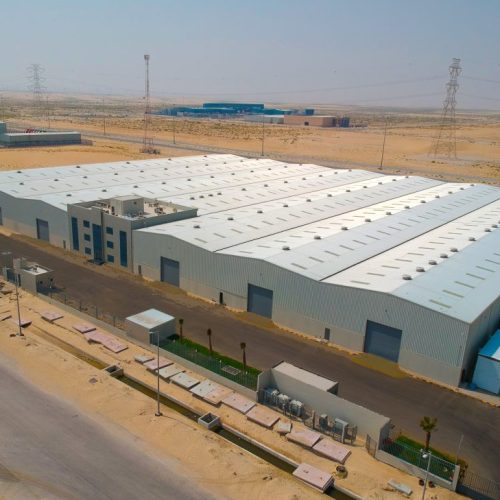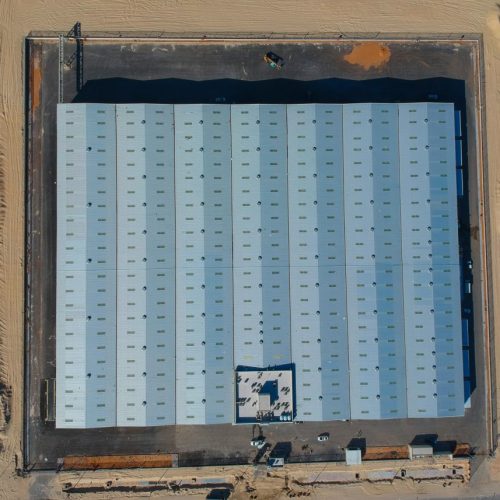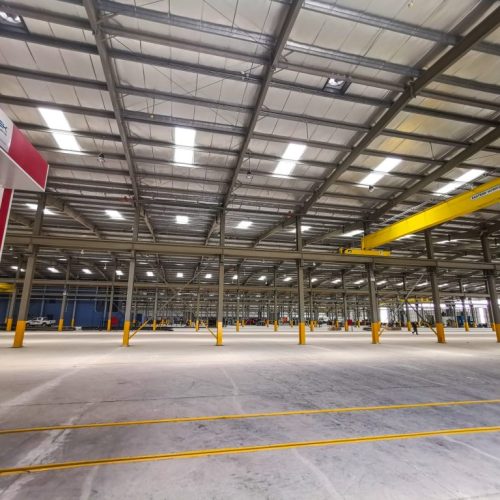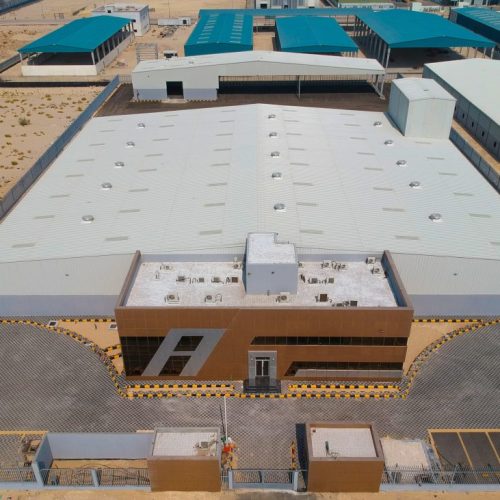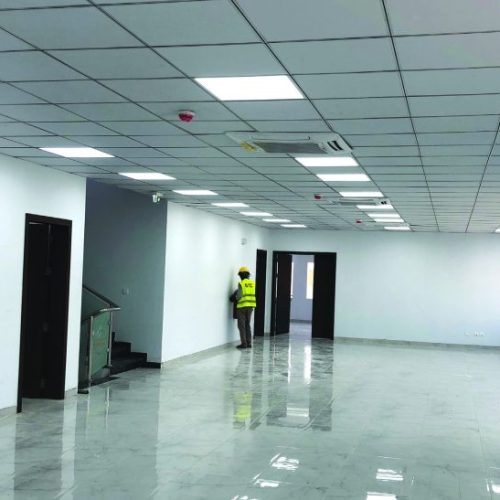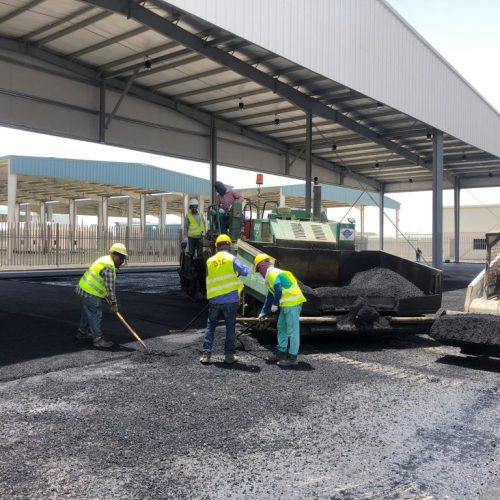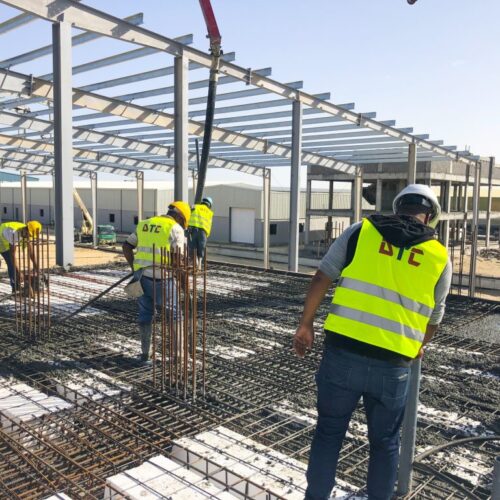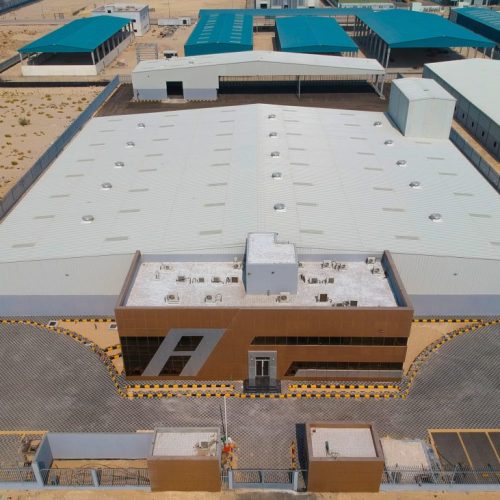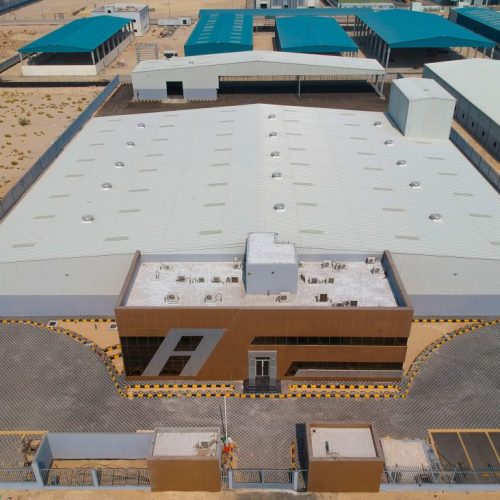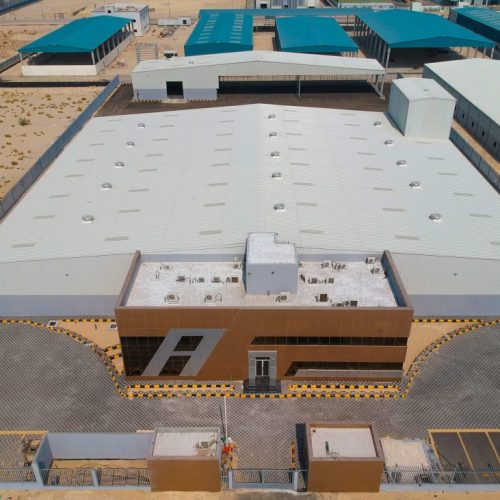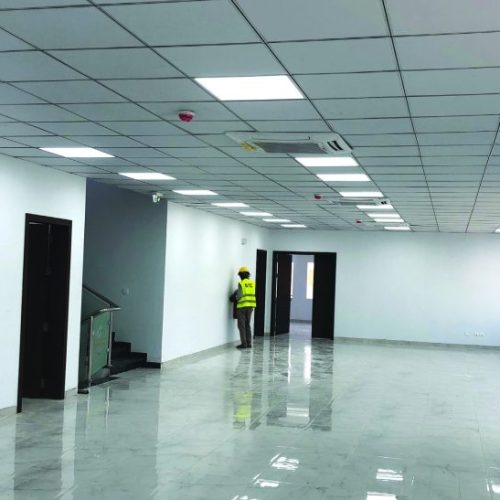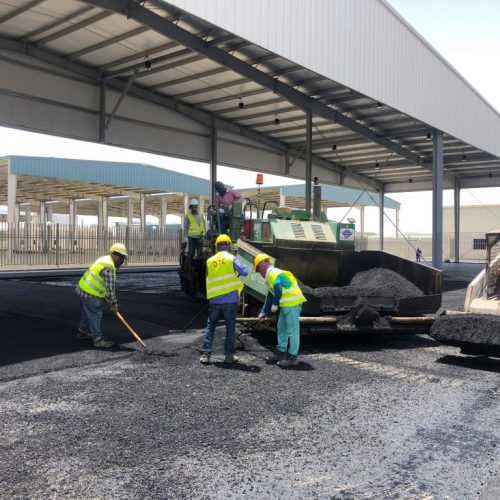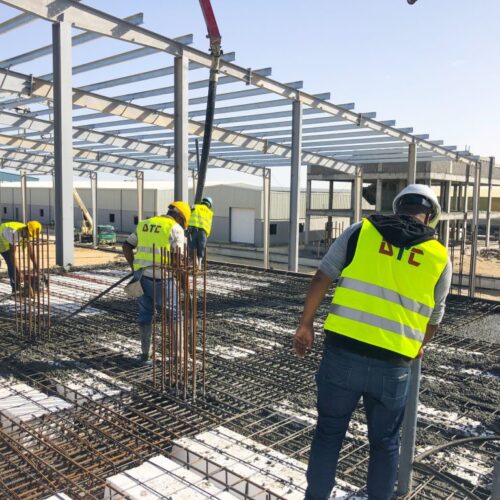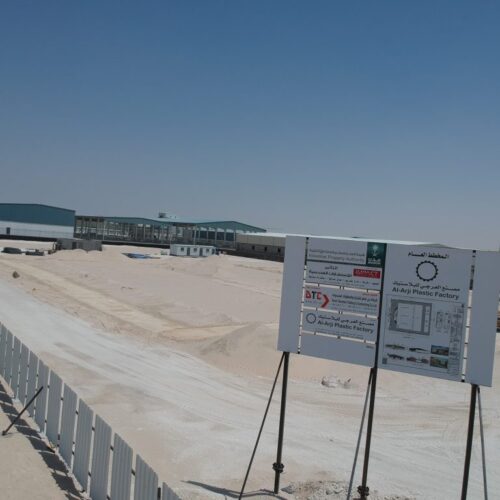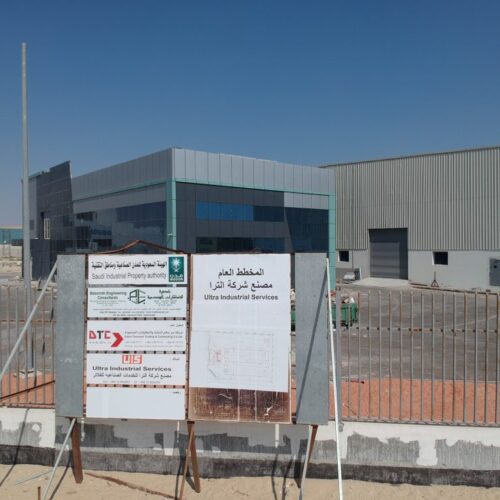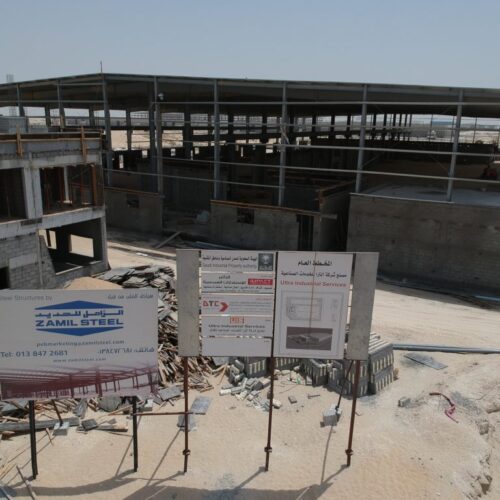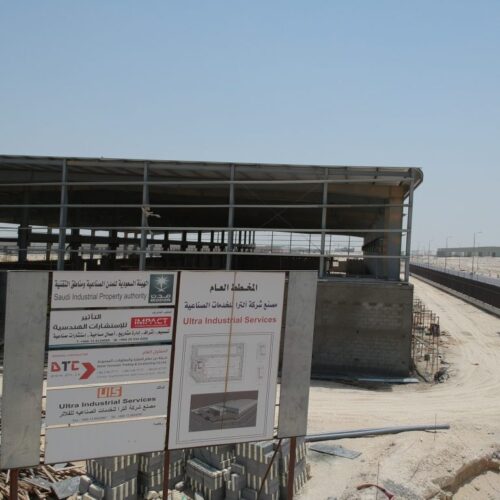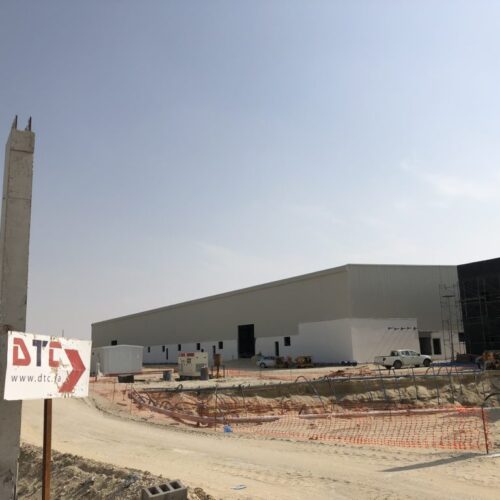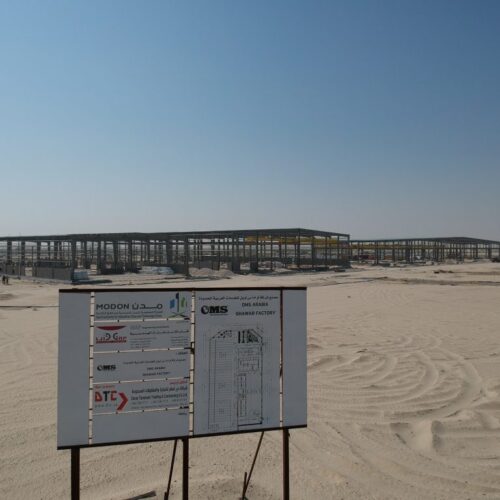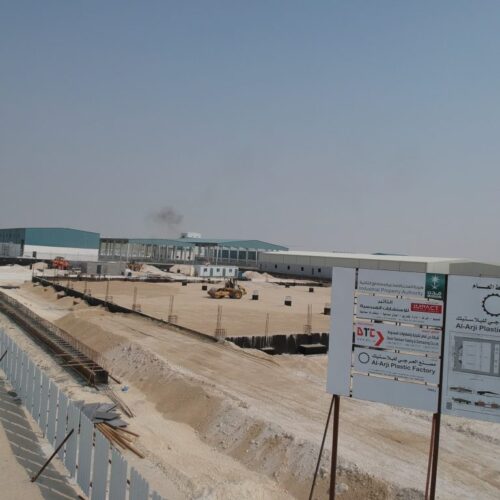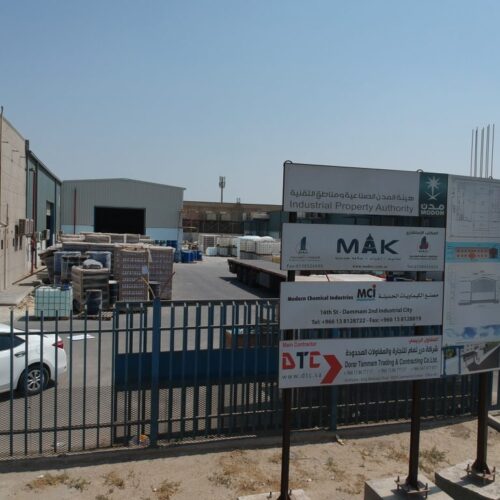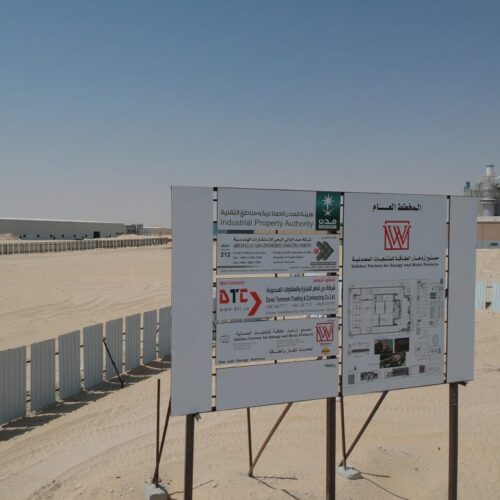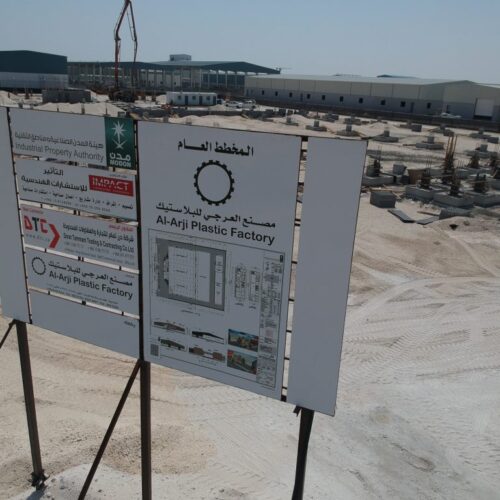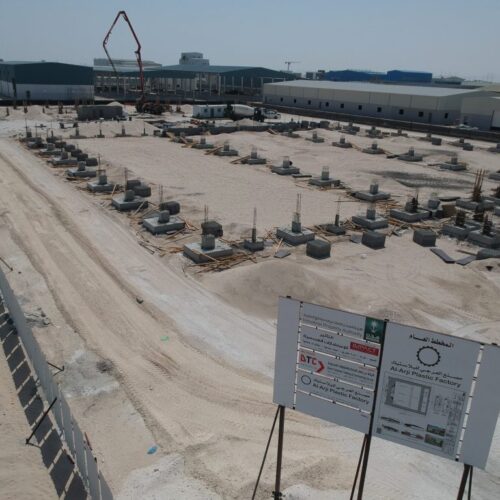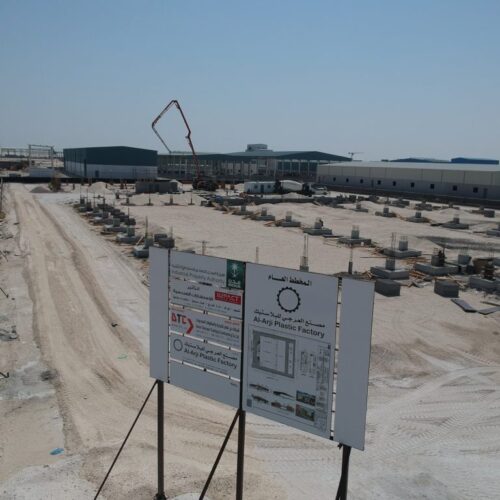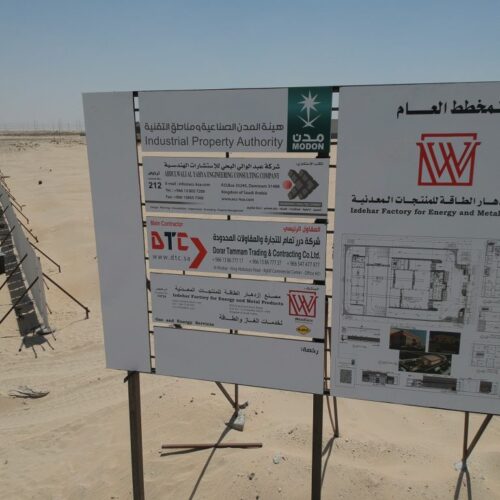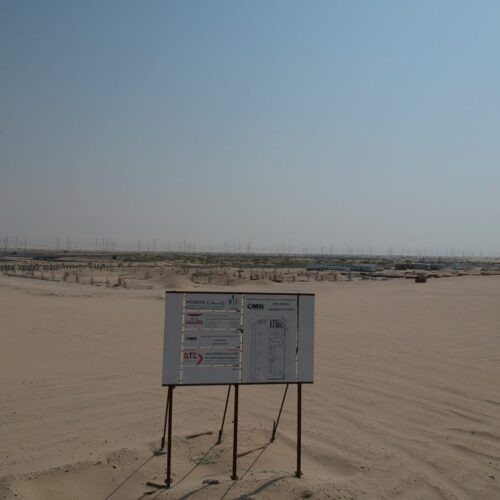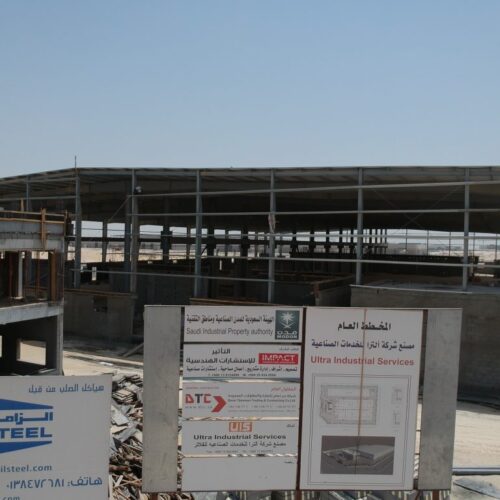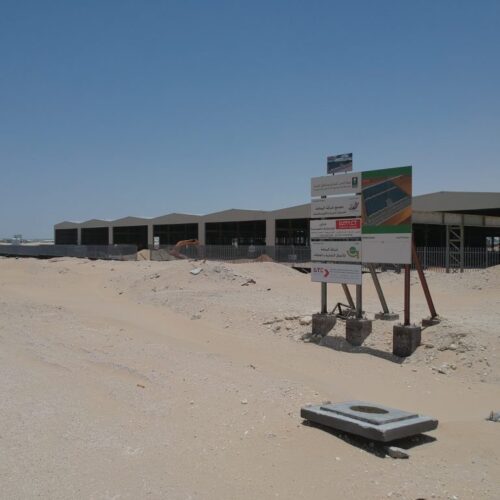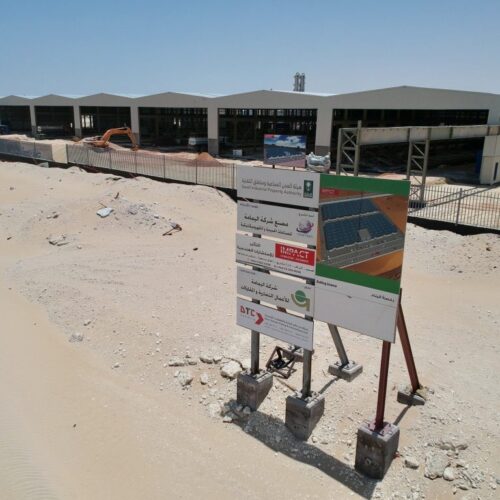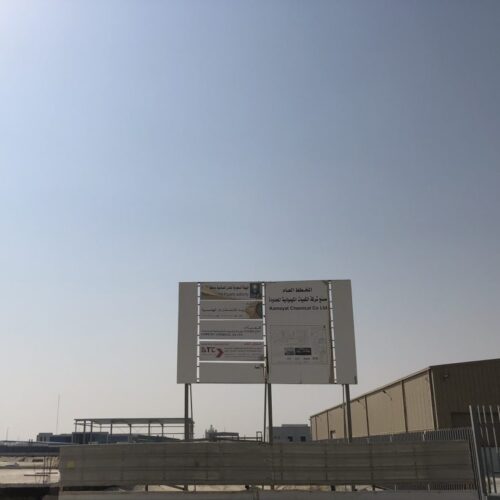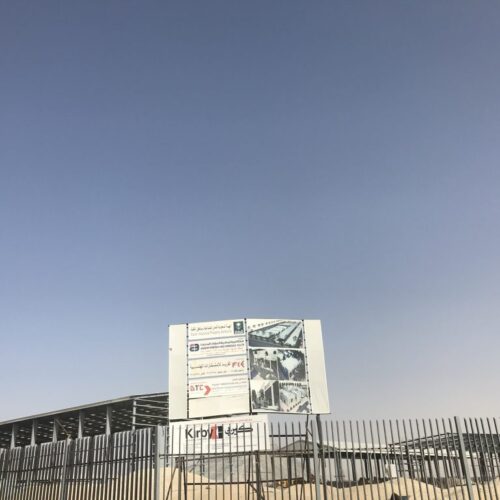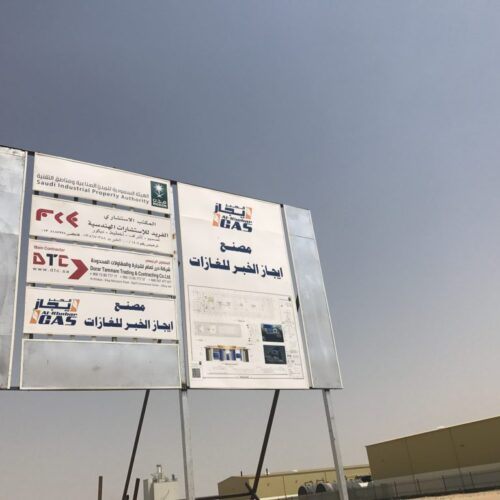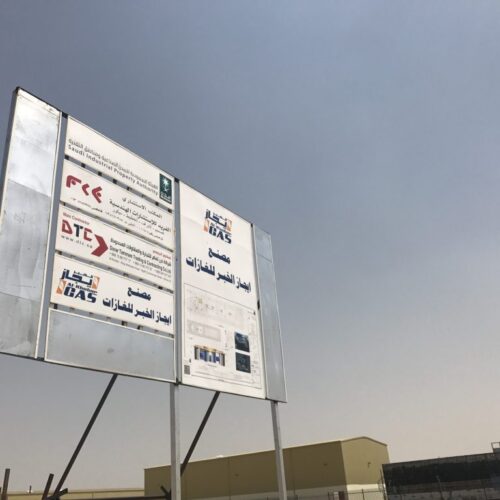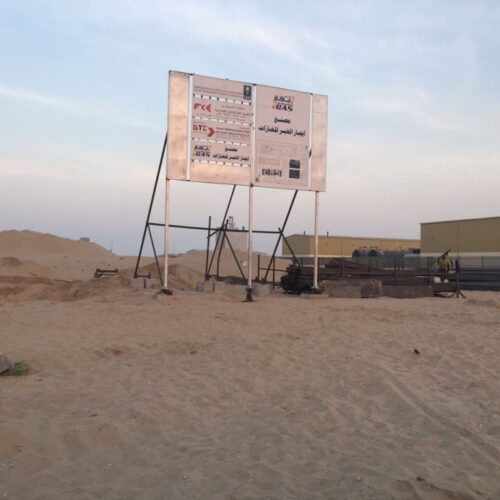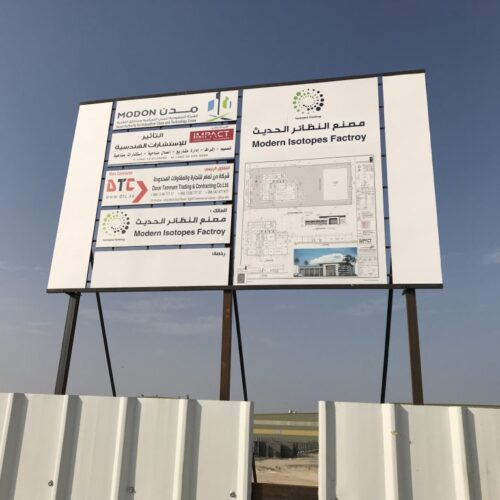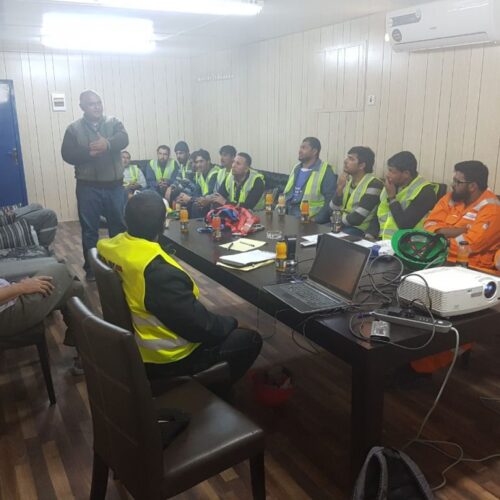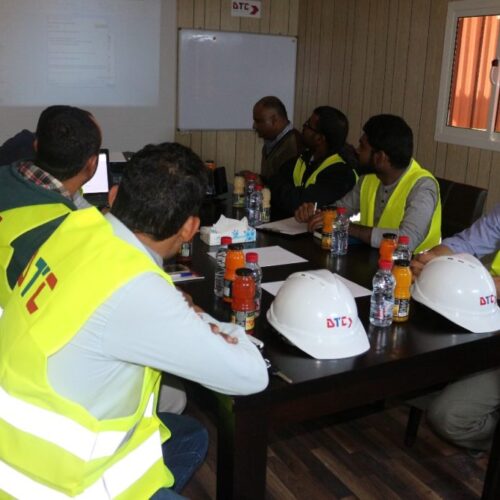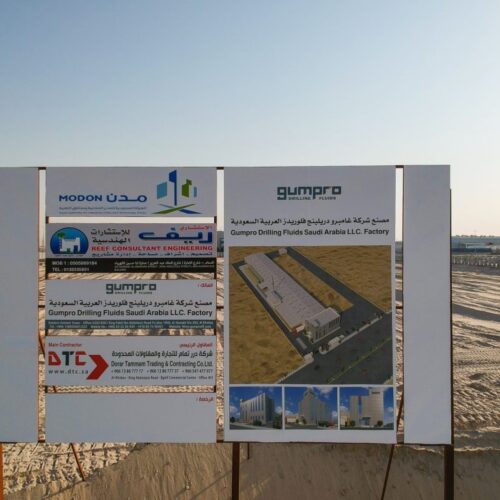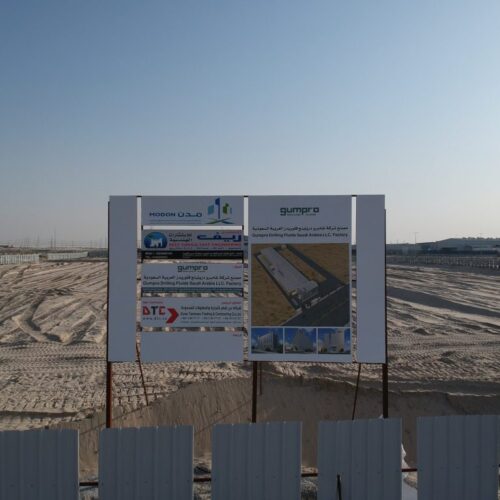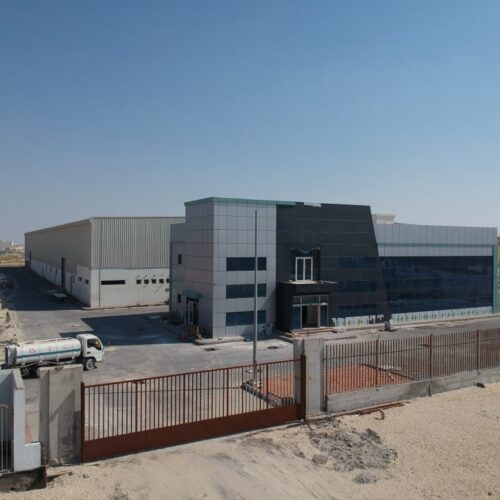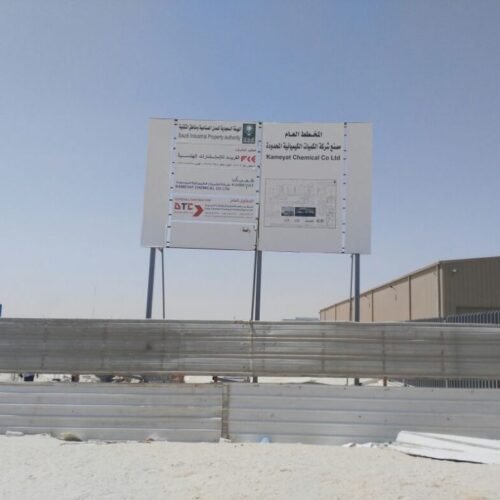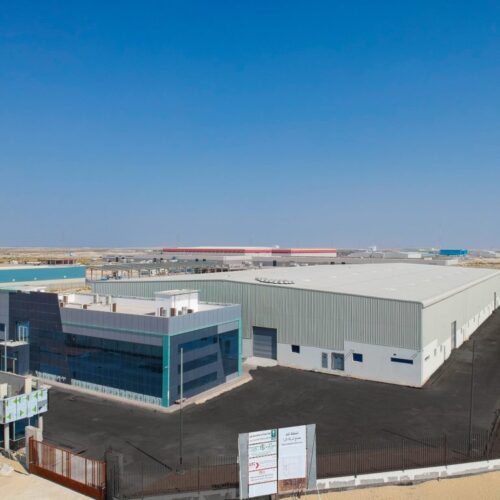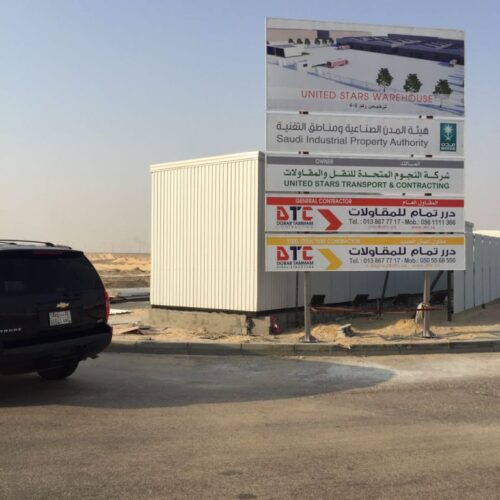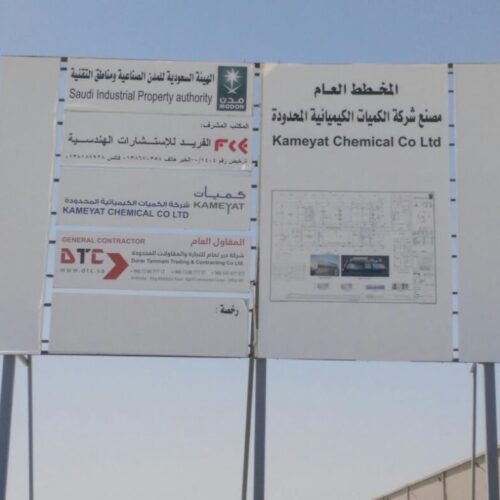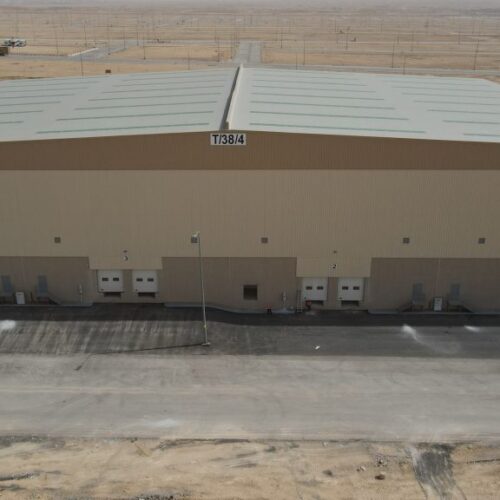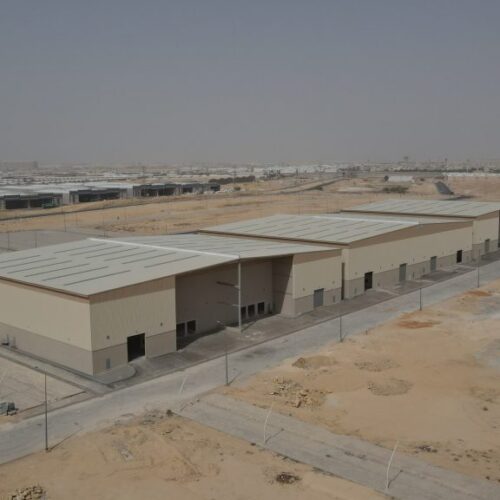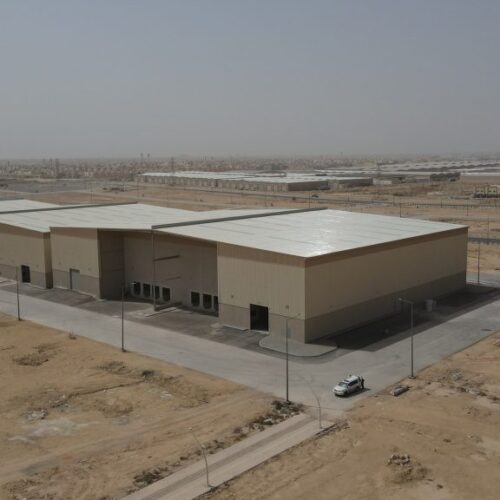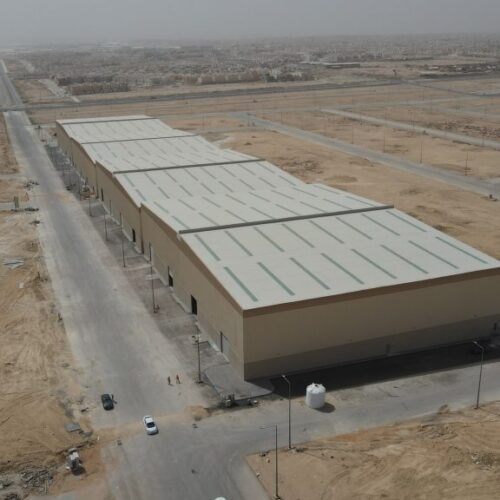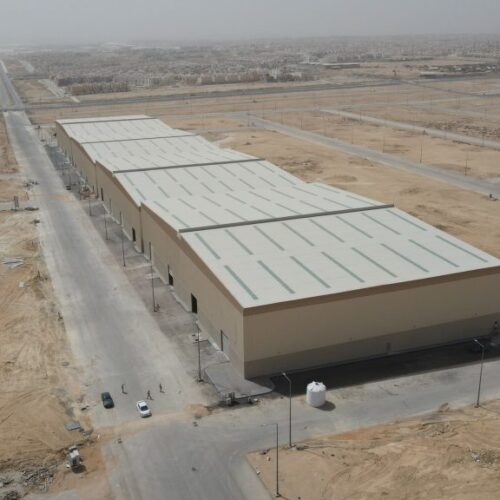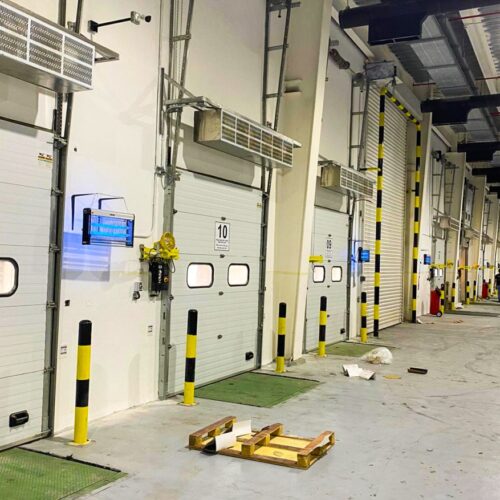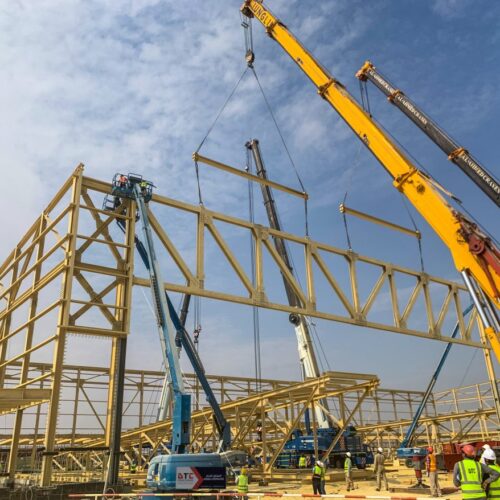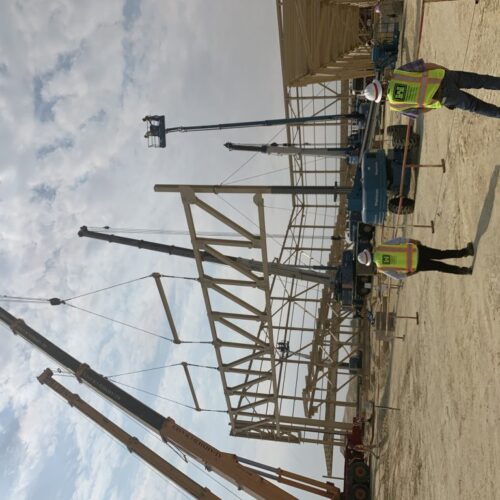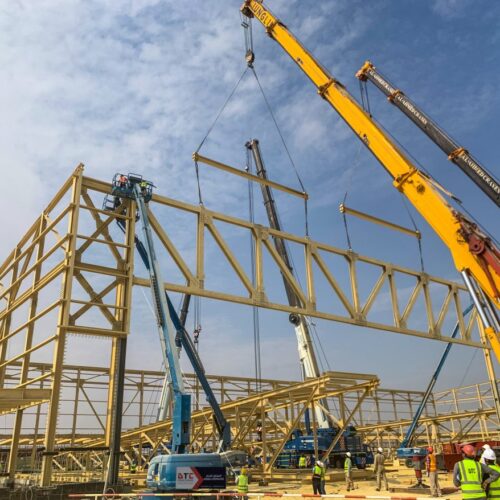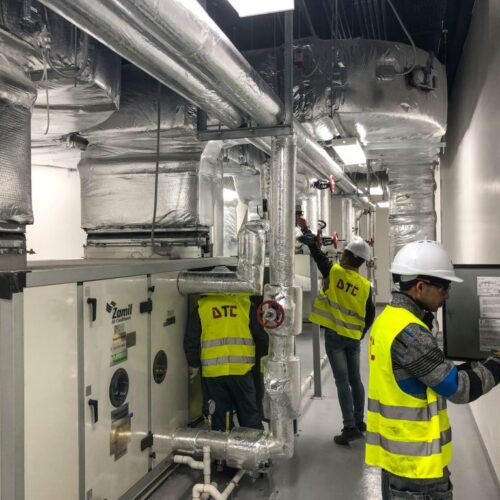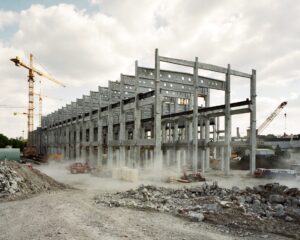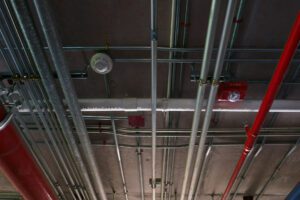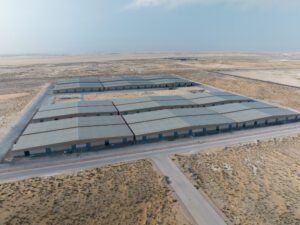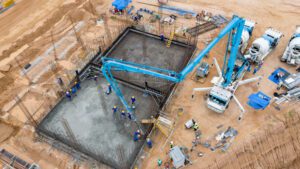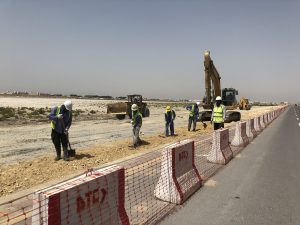Industrial Construction in Saudi Arabia: Challenges and Opportunities
Introduction:
Saudi Arabia is one of the largest oil producers in the world, and it has invested heavily in infrastructure and industrial projects over the past few decades. The country’s Vision 2030 plan aims to diversify its economy and reduce its reliance on oil revenues by investing in non-oil sectors, including construction and manufacturing. Industrial construction, in particular, is a crucial aspect of this plan, as it can help create job opportunities, boost economic growth, and enhance the country’s industrial capabilities.
This book aims to provide an overview of industrial construction in Saudi Arabia, including its challenges, opportunities, and future prospects. It is intended for investors, construction professionals, and anyone interested in the country’s industrial development. The book comprises fifteen chapters that cover various aspects of industrial construction in Saudi Arabia, including its history, current state, challenges, and potential.
Chapter 1: Introduction to Industrial Construction in Saudi Arabia
This chapter provides an overview of industrial construction in Saudi Arabia, including its significance, history, and current state. It explains the country’s industrialization journey and the role of industrial construction in achieving its development goals. The chapter also highlights the major industries in Saudi Arabia and their contribution to the country’s economy.
Chapter 2: Regulatory Framework for Industrial Construction in Saudi Arabia
This chapter discusses the regulatory framework for industrial construction in Saudi Arabia, including the relevant laws and regulations governing the sector. It explains the licensing requirements for industrial construction projects and the role of government agencies in overseeing the sector. The chapter also highlights the challenges faced by investors and developers in complying with the regulatory requirements.
Chapter 3: Project Management in Industrial Construction in Saudi Arabia
This chapter covers the project management aspects of industrial construction in Saudi Arabia, including project planning, procurement, and execution. It explains the project management practices used in the country and their effectiveness in delivering projects on time and within budget. The chapter also discusses the challenges faced by project managers and the measures taken to overcome them.
Chapter 4: Construction Technologies and Materials Used in Industrial Construction in Saudi Arabia
This chapter provides an overview of the construction technologies and materials used in industrial construction in Saudi Arabia. It discusses the latest trends in construction technology and their impact on the sector. The chapter also highlights the materials used in industrial construction projects and their properties, advantages, and limitations.
Chapter 5: Safety and Risk Management in Industrial Construction in Saudi Arabia
This chapter covers the safety and risk management aspects of industrial construction in Saudi Arabia. It explains the safety regulations and standards governing the sector and the measures taken to ensure worker safety and prevent accidents. The chapter also discusses the risk management practices used in the sector and their effectiveness in mitigating project risks.
Chapter 6: Sustainable Practices in Industrial Construction in Saudi Arabia
This chapter discusses sustainable practices in industrial construction in Saudi Arabia, including the use of renewable energy, waste management, and water conservation. It explains the sustainability standards adopted in the sector and their impact on the environment and society. The chapter also highlights the challenges and opportunities for sustainable industrial construction in Saudi Arabia.
Chapter 7: Financing Industrial Construction Projects in Saudi Arabia
This chapter covers the financing aspects of industrial construction projects in Saudi Arabia. It explains the sources of financing available for such projects, including government funding, bank loans, and equity investments. The chapter also discusses the challenges faced by investors and developers in securing financing and the measures taken to address them.
Chapter 8: Human Resource Management in Industrial Construction in Saudi Arabia
This chapter covers the human resource management aspects of industrial construction in Saudi Arabia, including recruitment, training, and development. It explains the labor laws governing the sector and the measures taken to attract and retain skilled workers. The chapter also discusses the challenges faced by companies in managing their human resources and the measures taken
Chapter 8 (continued): to address them, such as implementing employee engagement programs and offering competitive compensation packages.
Chapter 9: Industrial Construction Projects in the Oil and Gas Sector
This chapter focuses on industrial construction projects in the oil and gas sector in Saudi Arabia. It provides an overview of the sector and its importance to the country’s economy. The chapter also discusses the major oil and gas projects in the country, including the development of new fields, the expansion of existing facilities, and the construction of new refineries and petrochemical plants.
Chapter 10: Industrial Construction Projects in the Mining Sector
This chapter covers industrial construction projects in the mining sector in Saudi Arabia. It explains the country’s mineral resources and the role of the mining sector in its economy. The chapter also discusses the major mining projects in the country, including the development of new mines, the expansion of existing facilities, and the construction of processing plants.
Chapter 11: Industrial Construction Projects in the Manufacturing Sector
This chapter focuses on industrial construction projects in the manufacturing sector in Saudi Arabia. It explains the country’s efforts to diversify its economy and promote non-oil sectors, including manufacturing. The chapter also discusses the major manufacturing projects in the country, including the construction of new factories, the expansion of existing facilities, and the development of industrial zones.
Chapter 12: Infrastructure Development for Industrial Construction in Saudi Arabia
This chapter covers infrastructure development for industrial construction in Saudi Arabia. It explains the importance of infrastructure in supporting industrial projects and the challenges faced by developers in building the necessary infrastructure. The chapter also discusses the major infrastructure projects in the country, including the development of ports, airports, highways, and railways.
Chapter 13: Opportunities and Challenges for Industrial Construction in Saudi Arabia
This chapter provides an overview of the opportunities and challenges for industrial construction in Saudi Arabia. It discusses the country’s potential for industrial development, its competitive advantages, and the opportunities for foreign investors. The chapter also highlights the challenges facing the sector, including regulatory hurdles, financing constraints, and skills shortages.
Chapter 14: Future Prospects for Industrial Construction in Saudi Arabia
This chapter looks into the future prospects for industrial construction in Saudi Arabia. It discusses the country’s Vision 2030 plan and its goals for the industrial sector. The chapter also highlights the trends shaping the sector, including the adoption of new technologies, the shift towards sustainable practices, and the growing demand for industrial infrastructure.
Chapter 15: Conclusion
The final chapter summarizes the key points covered in the book and provides a concluding remark on the state of industrial construction in Saudi Arabia. It highlights the opportunities and challenges facing the sector and the measures taken to overcome them. The chapter also looks into the future of the sector and its potential contribution to the country’s economic development.
Introduction:
Saudi Arabia is a country undergoing rapid industrialization and economic diversification. Its economy has traditionally relied heavily on the oil and gas industry, but the government has recognized the need to diversify its economy and promote non-oil sectors. The country’s Vision 2030 plan outlines a roadmap for achieving this goal, with a focus on developing the industrial sector and attracting foreign investment.
The industrial construction sector is a critical component of Saudi Arabia’s economic development strategy. It plays a vital role in building the necessary infrastructure to support industrial projects, such as manufacturing facilities, refineries, petrochemical plants, and mining operations. The sector also creates jobs and provides opportunities for local and foreign businesses to invest in the country.
This book provides a comprehensive overview of industrial construction in Saudi Arabia. It covers the history and evolution of the sector, the major industrial projects in the country, the challenges faced by developers, and the opportunities for investors. The book is intended for anyone interested in learning about the industrial construction sector in Saudi Arabia, including investors, developers, contractors, and policymakers.
Chapter 1: Overview of Industrial Construction in Saudi Arabia
This chapter provides an introduction to the industrial construction sector in Saudi Arabia. It covers the history and evolution of the sector, the major players, and the regulatory framework governing the sector. The chapter also discusses the different types of industrial projects in the country, including manufacturing facilities, refineries, petrochemical plants, and mining operations.
Chapter 2: The Importance of Industrial Construction in Saudi Arabia’s Economy
This chapter discusses the importance of industrial construction in Saudi Arabia’s economy. It covers the contribution of the sector to the country’s GDP, job creation, and exports. The chapter also discusses the role of industrial construction in supporting the country’s economic diversification efforts.
Chapter 3: Major Industrial Construction Companies in Saudi Arabia
This chapter provides an overview of the major industrial construction companies in Saudi Arabia. It covers their history, areas of expertise, and major projects. The chapter also discusses the challenges faced by these companies in the sector, such as regulatory hurdles, financing constraints, and skills shortages.
Chapter 4: Industrial Construction Projects in the Power Sector
This chapter covers industrial construction projects in the power sector in Saudi Arabia. It explains the country’s energy resources and the role of the power sector in its economy. The chapter also discusses the major power projects in the country, including the construction of new power plants, the expansion of existing facilities, and the development of renewable energy projects.
Chapter 5: Industrial Construction Projects in the Water Sector
This chapter focuses on industrial construction projects in the water sector in Saudi Arabia. It explains the country’s water resources and the challenges facing its water sector, such as water scarcity and the need for conservation. The chapter also discusses the major water projects in the country, including the construction of desalination plants, the development of water distribution systems, and the improvement of wastewater treatment facilities.
Chapter 6: Industrial Construction Projects in the Transportation Sector
This chapter covers industrial construction projects in the transportation sector in Saudi Arabia. It explains the country’s transportation infrastructure and the importance of the sector to its economy. The chapter also discusses the major transportation projects in the country, including the construction of airports, seaports, highways, and railways.
Chapter 7: Human Capital Development for Industrial Construction in Saudi Arabia
This chapter focuses on human capital development for industrial construction in Saudi Arabia. It covers the challenges facing the sector in terms of skills shortages and the measures taken by the government and the private sector to address them, such as implementing employee engagement programs and offering competitive compensation packages.
Chapter 8: Financing Industrial Construction Projects in Saudi Arabia
This chapter covers financing options for industrial construction projects in Saudi Arabia. It discusses the various sources of funding available, such as bank loans, Islamic finance, and government grants. The chapter also explores the challenges faced by investors and developers in obtaining financing, such as high interest rates and the need for collateral.
Chapter 9: Legal and Regulatory Framework for Industrial Construction in Saudi Arabia
This chapter provides an overview of the legal and regulatory framework governing industrial construction in Saudi Arabia. It covers the laws and regulations related to construction permits, building codes, safety standards, and environmental protection. The chapter also discusses the challenges faced by developers in navigating the complex regulatory environment and the measures taken by the government to streamline the process.
Chapter 10: Project Management in Industrial Construction Projects in Saudi Arabia
This chapter focuses on project management in industrial construction projects in Saudi Arabia. It covers the different phases of project management, such as planning, design, construction, and operation. The chapter also discusses the challenges faced by project managers, such as resource allocation, risk management, and stakeholder management.
Chapter 11: Sustainability and Environmental Considerations in Industrial Construction in Saudi Arabia
This chapter explores sustainability and environmental considerations in industrial construction in Saudi Arabia. It covers the importance of sustainable development and environmental protection, the challenges facing the sector in terms of resource depletion and environmental degradation, and the measures taken by developers to promote sustainability and reduce their environmental impact.
Chapter 12: Technology and Innovation in Industrial Construction in Saudi Arabia
This chapter discusses technology and innovation in industrial construction in Saudi Arabia. It covers the latest trends and developments in the sector, such as Building Information Modeling (BIM), Virtual Design and Construction (VDC), and modular construction. The chapter also explores the challenges and opportunities presented by emerging technologies and the role of innovation in driving the sector forward.
Chapter 13: International Collaboration in Industrial Construction in Saudi Arabia
This chapter covers international collaboration in industrial construction in Saudi Arabia. It explores the benefits of collaboration with international partners, such as knowledge transfer, technology transfer, and access to new markets. The chapter also discusses the challenges and opportunities presented by cross-cultural collaboration and the measures taken by the government and the private sector to promote international partnerships.
Chapter 14: Case Studies in Industrial Construction Projects in Saudi Arabia
This chapter provides case studies of industrial construction projects in Saudi Arabia. It covers a range of projects, including manufacturing facilities, refineries, petrochemical plants, and mining operations. The chapter explores the challenges faced by developers in each project, the solutions implemented, and the lessons learned.
Chapter 15: Future Outlook for Industrial Construction in Saudi Arabia
This chapter provides a future outlook for industrial construction in Saudi Arabia. It covers the trends and developments likely to shape the sector in the coming years, such as technological innovation, sustainability, and international collaboration. The chapter also explores the challenges and opportunities presented by the evolving economic landscape and the measures taken by the government and the private sector to promote the growth and development of the sector.
Book Introduction:
Industrial construction in Saudi Arabia has been a key driver of the country’s economic growth for decades. The kingdom’s vast reserves of natural resources, strategic location, and supportive government policies have made it an attractive destination for investors and developers seeking to establish and expand their operations in the region.
This book provides a comprehensive overview of the industrial construction sector in Saudi Arabia. It covers the latest trends and developments in the sector, the challenges faced by investors and developers, and the measures taken by the government and the private sector to promote growth and development.
The book is divided into fifteen chapters, each covering a specific aspect of industrial construction in Saudi Arabia. Chapter 1 provides an introduction to the sector, covering its history, economic importance, and key players. Chapters 2-4 focus on the infrastructure, workforce, and supply chain, respectively, providing a detailed analysis of the resources and capabilities available to support industrial construction in the country.
Chapters 5-7 cover the key sectors of industrial construction in Saudi Arabia, including oil and gas, petrochemicals, and mining. These chapters explore the opportunities and challenges facing each sector, the latest trends and developments, and the measures taken to promote growth and development.
Chapters 8-10 cover financing, legal and regulatory frameworks, and project management, respectively. These chapters provide a detailed analysis of the financial, legal, and project management aspects of industrial construction in Saudi Arabia, including the challenges faced by investors and developers and the measures taken to overcome them.
Chapters 11-13 cover sustainability and environmental considerations, technology and innovation, and international collaboration, respectively. These chapters explore the latest trends and developments in each area and the measures taken to promote sustainability, innovation, and international collaboration in the sector.
Chapter 14 provides case studies of industrial construction projects in Saudi Arabia, highlighting the challenges faced by developers, the solutions implemented, and the lessons learned. Chapter 15 provides a future outlook for the sector, exploring the trends and developments likely to shape the industry in the coming years and the measures taken to promote growth and development.
Overall, this book provides a comprehensive and up-to-date overview of industrial construction in Saudi Arabia, making it an essential resource for investors, developers, policymakers, and academics interested in the sector.
Chapter 1: Introduction to Industrial Construction in Saudi Arabia
Saudi Arabia is known for its vast oil and gas reserves, but the country is also a major player in the industrial construction sector. Industrial construction refers to the building and maintenance of facilities that support the production of goods, such as factories, warehouses, and processing plants. These facilities play a vital role in the economy, providing jobs and contributing to the country’s gross domestic product (GDP).
The history of industrial construction in Saudi Arabia can be traced back to the 1930s when the country’s first oil well was discovered. The discovery of oil led to the development of the petrochemical industry, which quickly became a key driver of the country’s economy. Over the years, the government has taken steps to promote industrial construction, including the establishment of industrial cities and zones, the provision of infrastructure and utilities, and the development of a skilled workforce.
Today, the industrial construction sector in Saudi Arabia is characterized by a number of key players, including developers, contractors, consultants, and suppliers. Major developers in the country include Saudi Aramco, the state-owned oil company, and SABIC, a petrochemical company. Contractors include local and international firms such as Saudi Binladin Group and Bechtel. Consultants and suppliers play a vital role in the sector, providing expertise and resources to support the development of industrial facilities.
In recent years, the government has taken steps to promote industrial construction in the country through the Saudi Vision 2030 initiative. The initiative aims to diversify the economy and reduce the country’s reliance on oil and gas by promoting the development of new industries and sectors. The initiative includes measures to support small and medium-sized enterprises, promote entrepreneurship, and attract foreign investment.
Despite the many opportunities in the industrial construction sector in Saudi Arabia, there are also challenges. These include a shortage of skilled labor, bureaucratic red tape, and the need to diversify the economy. Overcoming these challenges will require a collaborative effort between the government, the private sector, and international partners.
In the following chapters, we will explore the various aspects of industrial construction in Saudi Arabia in more detail, including the infrastructure, workforce, and supply chain, as well as the key sectors of oil and gas, petrochemicals, and mining. We will also examine the financing, legal and regulatory frameworks, and project management aspects of industrial construction, as well as the sustainability, innovation, and international collaboration aspects of the sector. Finally, we will provide case studies of industrial construction projects in Saudi Arabia and a future outlook for the sector.
Chapter 2: Infrastructure and Utilities in Industrial Construction
Industrial construction in Saudi Arabia relies heavily on the availability and quality of infrastructure and utilities. This includes transportation, power, water, and telecommunications. The government has invested heavily in infrastructure development over the years, including the construction of roads, airports, seaports, and railways. In addition, the government has developed a network of industrial cities and zones that provide a range of services and infrastructure to support industrial development.
Transportation is a key factor in the success of industrial construction projects. Saudi Arabia has a modern road network that connects major cities and industrial centers. The country also has several airports, including King Abdulaziz International Airport in Jeddah and King Khalid International Airport in Riyadh, which handle both domestic and international flights. In addition, the country has several seaports, including the Port of Jeddah and the Port of Dammam, which provide access to international markets.
Power is another critical factor in industrial construction. The government has invested heavily in power generation, including the construction of new power plants and the development of renewable energy sources such as solar and wind. The Saudi Electricity Company (SEC) is responsible for the generation, transmission, and distribution of electricity in the country. The government has also implemented programs to improve energy efficiency and reduce energy consumption in the industrial sector.
Water is another essential resource for industrial construction. Saudi Arabia has limited water resources and relies heavily on desalination to meet its water needs. The government has invested in desalination plants and water distribution networks to ensure a reliable supply of water for industrial projects. The National Water Company (NWC) is responsible for the provision of water and wastewater services in the country.
Telecommunications infrastructure is also critical for industrial construction. The government has developed a modern telecommunications network that provides high-speed internet and other services. In addition, the government has implemented programs to improve digital connectivity in the industrial sector, including the provision of fiber-optic networks in industrial cities and zones.
In summary, infrastructure and utilities play a vital role in industrial construction in Saudi Arabia. The government has made significant investments in these areas to support industrial development, but there are still challenges, including the need to improve the efficiency and reliability of infrastructure and the need to develop more sustainable and resilient infrastructure in the face of climate change and other challenges.
Chapter 3: Regulatory Environment in Industrial Construction
The regulatory environment in Saudi Arabia is an essential factor to consider in industrial construction. The government has implemented several regulations and laws to ensure that industrial construction projects are carried out safely and efficiently. In addition, the government has established several institutions and agencies to monitor and enforce these regulations.
One of the primary regulatory bodies responsible for overseeing industrial construction is the Saudi Arabian Standards, Metrology and Quality Organization (SASO). SASO is responsible for developing and implementing standards and regulations related to safety, quality, and environmental protection in the industrial sector. SASO’s standards cover a wide range of areas, including building codes, electrical safety, and environmental protection.
Another important regulatory body is the Saudi Arabian General Investment Authority (SAGIA). SAGIA is responsible for promoting and regulating foreign investment in the country. SAGIA works closely with industrial companies to facilitate investment and ensure compliance with Saudi Arabian regulations.
The Ministry of Environment, Water, and Agriculture (MEWA) is also a critical regulatory body in industrial construction. MEWA is responsible for protecting the environment and natural resources in the country. The ministry has implemented several programs to monitor and control pollution and ensure the sustainable use of natural resources in the industrial sector.
The Ministry of Labor and Social Development (MLSD) is responsible for regulating labor in the industrial sector. The ministry ensures that industrial companies comply with labor laws and regulations and that workers are treated fairly and safely.
The government has also established several institutions and agencies to support industrial development. These include the Saudi Industrial Development Fund (SIDF), which provides financing and other services to industrial companies, and the Saudi Industrial Property Authority (MODON), which is responsible for developing and managing industrial cities and zones.
In summary, the regulatory environment in Saudi Arabia is complex, but essential for the safe and efficient operation of industrial construction projects. The government has implemented several regulations and laws to ensure compliance with safety, quality, and environmental standards, and has established several institutions and agencies to support industrial development.
Chapter 4: Key Challenges in Industrial Construction in KSA
Industrial construction in Saudi Arabia faces several challenges, both internal and external. These challenges impact the efficiency and effectiveness of industrial construction projects and require careful consideration by stakeholders in the industry.
One of the key challenges in industrial construction is the shortage of skilled labor. The industrial sector requires specialized skills and expertise, which are often not available in the local workforce. This shortage can result in delays in project completion and increased costs for industrial companies. Additionally, the strict labor regulations and requirements in Saudi Arabia can make it challenging for industrial companies to hire foreign labor, further exacerbating the shortage of skilled workers.
Another significant challenge in industrial construction is the supply chain disruption caused by the COVID-19 pandemic. The pandemic has disrupted global supply chains, leading to delays in the delivery of critical construction materials, equipment, and machinery. The supply chain disruptions have also increased the costs of construction materials and have made it challenging to meet project timelines.
In addition to labor and supply chain challenges, industrial construction in Saudi Arabia also faces infrastructure limitations. The country’s transportation infrastructure, such as roads and railways, is still underdeveloped, making it difficult to transport equipment, materials, and goods to and from industrial construction sites. Furthermore, the lack of reliable and affordable energy sources, particularly electricity and natural gas, can also impact industrial construction projects’ feasibility and cost.
Finally, bureaucratic red tape and regulatory requirements can also pose challenges for industrial construction projects in Saudi Arabia. The process of obtaining permits and licenses, complying with environmental regulations, and navigating government bureaucracies can be time-consuming and costly for industrial companies.
In summary, industrial construction in Saudi Arabia faces several challenges that impact project efficiency, effectiveness, and cost. These challenges include a shortage of skilled labor, supply chain disruptions caused by the COVID-19 pandemic, infrastructure limitations, and bureaucratic red tape and regulatory requirements. To overcome these challenges, stakeholders in the industry must collaborate and innovate to find solutions that improve project outcomes.
Chapter 5: Strategies for Overcoming Challenges in Industrial Construction in KSA
Industrial construction projects in Saudi Arabia can be challenging, but there are strategies that stakeholders in the industry can implement to overcome these challenges and improve project outcomes.
One strategy for overcoming the shortage of skilled labor is to invest in training programs and education initiatives. Industrial companies can partner with local universities and vocational schools to develop training programs that equip the local workforce with the specialized skills and expertise required in the industrial sector. Additionally, companies can provide apprenticeships and on-the-job training to help develop the skills of new hires.
To mitigate the supply chain disruptions caused by the COVID-19 pandemic, industrial companies can explore alternative sourcing options for critical construction materials, equipment, and machinery. This may involve diversifying suppliers or exploring local sourcing options to reduce reliance on global supply chains. Additionally, companies can collaborate with suppliers to establish contingency plans that address potential disruptions and ensure the timely delivery of materials and equipment.
To address infrastructure limitations, industrial companies can invest in developing transportation and energy infrastructure. This may involve collaborating with government agencies to improve roads and railways or investing in renewable energy sources to reduce reliance on traditional energy sources. Additionally, companies can explore alternative transportation options, such as waterways or air transport, to transport equipment and materials to and from construction sites.
To overcome bureaucratic red tape and regulatory requirements, industrial companies can engage in proactive communication with government agencies and stakeholders. This may involve establishing a dedicated team to handle regulatory compliance and permitting requirements or partnering with consultants and legal experts to navigate complex regulatory environments. Additionally, companies can explore public-private partnerships to share the costs and risks associated with regulatory compliance.
In summary, stakeholders in the industrial construction industry in Saudi Arabia can overcome the challenges they face by implementing proactive strategies that address labor shortages, supply chain disruptions, infrastructure limitations, and bureaucratic red tape. These strategies may involve investing in training programs, exploring alternative sourcing options, investing in infrastructure, and engaging in proactive communication with government agencies and stakeholders.
Chapter 6: Best Practices for Quality Assurance in Industrial Construction Projects in KSA
Ensuring quality assurance is essential in industrial construction projects in Saudi Arabia, as it can help mitigate project risks, prevent delays, and improve project outcomes. Here are some best practices for quality assurance in industrial construction projects in KSA.
Develop a Quality Control Plan (QCP): A QCP is a document that outlines the specific quality control activities to be carried out during a project. It should include procedures for inspections, testing, and documentation, as well as roles and responsibilities of the quality control team.
Establish Quality Objectives: Quality objectives should be established at the beginning of the project, and they should be specific, measurable, achievable, relevant, and time-bound. These objectives should be aligned with the client’s requirements and project specifications.
Conduct Inspections and Testing: Inspections and testing should be conducted at various stages of the project, including pre-construction, during construction, and post-construction. This should include testing of materials, equipment, and systems to ensure they meet the required specifications.
Document Quality Control Activities: All quality control activities should be documented, including inspection reports, test results, and non-conformance reports. These documents should be stored and maintained for future reference.
Ensure Compliance with Standards: Compliance with industry standards and regulatory requirements is essential to ensuring quality assurance in industrial construction projects. This includes complying with local building codes, safety regulations, and environmental standards.
Provide Training and Education: Providing training and education to the quality control team and construction staff can help ensure that they have the necessary knowledge and skills to carry out quality control activities effectively.
Implement Corrective Actions: When quality issues arise, corrective actions should be taken promptly to prevent them from recurring. This may involve retesting materials or systems, making necessary adjustments, or replacing defective components.
In conclusion, implementing these best practices for quality assurance can help ensure that industrial construction projects in Saudi Arabia meet the required standards, specifications, and client expectations. By establishing a comprehensive QCP, setting quality objectives, conducting inspections and testing, documenting quality control activities, ensuring compliance with standards, providing training and education, and implementing corrective actions, stakeholders can achieve project success and mitigate risks.
Chapter 7: Health and Safety Considerations in Industrial Construction Projects in KSA
Industrial construction projects in Saudi Arabia involve many potential risks to workers’ health and safety. Therefore, it is essential to implement measures to mitigate these risks and ensure a safe working environment. Here are some considerations for health and safety in industrial construction projects in KSA.
Develop a Safety Plan: A safety plan should be developed and implemented before the start of the project. This should include identifying potential hazards, assessing risks, and developing procedures for mitigating risks.
Provide Adequate Training: Workers should receive appropriate training in health and safety practices before starting work on the project. This should include training on the safe use of equipment and machinery, as well as training on emergency procedures.
Ensure Compliance with Regulations: All workers and contractors must comply with local regulations and safety standards, such as the Saudi Arabian Labor Law, Occupational Health and Safety Guidelines, and other relevant legislation.
Use Personal Protective Equipment (PPE): All workers should be provided with and required to wear appropriate PPE, such as hard hats, safety glasses, gloves, and safety shoes.
Conduct Regular Inspections: Regular inspections of the construction site should be conducted to identify and mitigate potential safety hazards. This should include inspections of equipment, machinery, and scaffolding, as well as inspections of the general work environment.
Monitor Health and Safety Performance: Health and safety performance should be monitored regularly to identify areas for improvement and ensure that safety measures are being followed.
Implement Emergency Procedures: Emergency procedures, such as evacuation plans and first aid procedures, should be developed and communicated to all workers. Regular emergency drills should also be conducted to ensure that workers know what to do in the event of an emergency.
In conclusion, ensuring health and safety in industrial construction projects in Saudi Arabia is crucial to preventing accidents, injuries, and fatalities. By developing a safety plan, providing adequate training, ensuring compliance with regulations, using appropriate PPE, conducting regular inspections, monitoring health and safety performance, and implementing emergency procedures, stakeholders can create a safe working environment and mitigate risks.
Chapter 8: Environmental Considerations in Industrial Construction Projects in KSA
Industrial construction projects in Saudi Arabia can have significant impacts on the environment. Therefore, it is crucial to consider environmental factors and implement measures to mitigate these impacts. Here are some environmental considerations for industrial construction projects in KSA.
Conduct Environmental Assessments: Environmental assessments should be conducted before the start of the project to identify potential environmental impacts, such as air pollution, water pollution, and habitat destruction.
Implement Environmental Management Plans: An environmental management plan should be developed and implemented to mitigate the potential environmental impacts of the project. This should include procedures for waste management, water management, and air pollution control.
Use Sustainable Materials: Sustainable materials should be used wherever possible in the construction of industrial facilities. This includes using renewable energy sources, such as solar power, and using recycled materials in construction.
Reduce Energy Consumption: Energy consumption should be minimized by using energy-efficient building designs and equipment, such as LED lighting and energy-efficient HVAC systems.
Manage Water Resources: Water resources should be managed efficiently, including the use of water-saving equipment and procedures, the recycling of wastewater, and the implementation of rainwater harvesting systems.
Preserve Natural Habitats: The preservation of natural habitats should be considered when designing and constructing industrial facilities. This includes the protection of wildlife and plant species, as well as the conservation of natural resources.
Monitor Environmental Performance: Environmental performance should be monitored regularly to identify areas for improvement and ensure that environmental measures are being followed.
In conclusion, industrial construction projects in Saudi Arabia can have significant impacts on the environment. Therefore, it is crucial to consider environmental factors and implement measures to mitigate these impacts. By conducting environmental assessments, implementing environmental management plans, using sustainable materials, reducing energy consumption, managing water resources, preserving natural habitats, and monitoring environmental performance, stakeholders can create a sustainable and environmentally friendly industrial construction project.
Chapter 9: Safety Considerations in Industrial Construction Projects in KSA
Industrial construction projects in Saudi Arabia can be hazardous work environments, and safety considerations should be a top priority for stakeholders. Here are some safety considerations for industrial construction projects in KSA.
Conduct Risk Assessments: Before the start of the project, a risk assessment should be conducted to identify potential hazards and risks in the construction site. This should include identifying potential hazards for workers and visitors, such as working at heights, electrical hazards, and heavy machinery.
Provide Safety Training: All workers and contractors involved in the project should be provided with safety training, including training on the use of personal protective equipment (PPE), hazard recognition, and emergency procedures.
Implement Safety Policies and Procedures: Safety policies and procedures should be established and implemented on the construction site. This should include procedures for working at heights, electrical work, and the use of heavy machinery. Additionally, emergency procedures should be established and communicated to all workers and contractors.
Use Appropriate PPE: All workers and contractors on the construction site should be required to wear appropriate PPE, such as hard hats, safety glasses, gloves, and safety shoes.
Monitor Safety Performance: Safety performance should be monitored regularly to identify areas for improvement and ensure that safety measures are being followed. Safety audits and inspections should be conducted periodically to ensure compliance with safety policies and procedures.
Encourage Reporting of Safety Incidents: Workers should be encouraged to report safety incidents, near misses, and hazards to the appropriate authorities. This can help to identify and address potential safety issues before they result in accidents or injuries.
In conclusion, safety considerations are essential for industrial construction projects in Saudi Arabia. By conducting risk assessments, providing safety training, implementing safety policies and procedures, using appropriate PPE, monitoring safety performance, and encouraging the reporting of safety incidents, stakeholders can ensure a safe and healthy work environment for all workers and contractors involved in the project.
Chapter 10: Sustainability in Industrial Construction Projects in KSA
Sustainability is becoming an increasingly important consideration in industrial construction projects in Saudi Arabia. Here are some ways in which sustainability can be incorporated into industrial construction projects in KSA.
Energy Efficiency: Industrial construction projects should be designed to be energy-efficient, with the use of energy-efficient building materials, insulation, and lighting. Additionally, renewable energy sources such as solar and wind power can be used to reduce reliance on non-renewable sources of energy.
Water Conservation: Water conservation measures should be implemented in industrial construction projects, such as the use of low-flow fixtures and the use of recycled water for non-potable purposes. Additionally, rainwater harvesting systems can be implemented to reduce reliance on municipal water sources.
Waste Reduction and Recycling: Construction waste is a significant contributor to landfill waste, and construction companies should aim to reduce waste and recycle materials wherever possible. This can include the use of recycled building materials, on-site recycling facilities, and the implementation of waste management plans.
Green Building Certifications: Industrial construction projects in KSA can achieve green building certifications, such as Leadership in Energy and Environmental Design (LEED) certification or the Building Research Establishment Environmental Assessment Method (BREEAM) certification. These certifications require the implementation of sustainable practices in the construction process, as well as ongoing sustainability measures throughout the lifecycle of the building.
Sustainable Site Development: The development of industrial construction sites should incorporate sustainable practices, such as the preservation of natural habitats, the use of permeable paving materials to reduce runoff, and the implementation of green roofs to improve air quality and reduce heat island effects.
By incorporating sustainability practices into industrial construction projects in KSA, stakeholders can reduce the environmental impact of the construction process and promote long-term sustainability in the region. Additionally, implementing sustainable practices can lead to cost savings over the lifetime of the building and improve the overall quality of life for occupants and the surrounding community.
Chapter 11: Challenges of Industrial Construction Projects in KSA
While there are many benefits to industrial construction projects in KSA, there are also significant challenges that must be addressed. Here are some of the major challenges faced by industrial construction projects in KSA.
Skilled Labor Shortages: The construction industry in KSA is facing a significant shortage of skilled labor, which can delay projects and increase costs. To address this issue, construction companies must invest in training programs and recruit workers from outside the region.
Infrastructure Challenges: The lack of adequate infrastructure in some parts of KSA can make industrial construction projects more difficult and costly. Issues such as inadequate transportation networks, limited access to materials, and inadequate power supplies can all impact the construction process.
Regulatory and Legal Challenges: Industrial construction projects in KSA must navigate a complex regulatory environment, with many permits and approvals required before construction can begin. Additionally, legal disputes can arise during the construction process, which can lead to delays and increased costs.
Cultural and Language Barriers: KSA has a diverse population with many different cultural and linguistic backgrounds. This can present challenges for industrial construction projects, particularly in communication and coordination between stakeholders.
Environmental and Sustainability Concerns: Industrial construction projects in KSA must address environmental and sustainability concerns, such as water conservation, waste management, and air quality. Failure to address these concerns can lead to negative impacts on the environment and surrounding communities.
By addressing these challenges head-on, industrial construction projects in KSA can become more efficient, cost-effective, and sustainable. This requires a collaborative effort between all stakeholders involved in the construction process, including construction companies, government agencies, and local communities.
Chapter 12: Strategies for Successful Industrial Construction Projects in KSA
To overcome the challenges discussed in the previous chapter, construction companies in KSA must implement effective strategies to ensure successful industrial construction projects. Here are some strategies that can help:
Develop a Comprehensive Plan: Industrial construction projects require careful planning and coordination. Develop a comprehensive plan that outlines project objectives, timelines, budgets, and risks. This plan should be communicated clearly to all stakeholders to ensure everyone is on the same page.
Engage with Local Communities: Engage with local communities early in the construction process to build trust and establish positive relationships. This can help mitigate any concerns or issues that may arise during construction.
Utilize Advanced Technologies: Advanced technologies such as Building Information Modeling (BIM) and Virtual Design and Construction (VDC) can help improve collaboration and communication among project teams, reducing errors and delays.
Prioritize Safety: Industrial construction projects can be dangerous, so safety should always be a top priority. Develop a comprehensive safety plan that includes regular safety training, risk assessments, and emergency procedures.
Invest in Skilled Labor: As discussed earlier, skilled labor shortages can be a significant challenge for industrial construction projects in KSA. Invest in training programs and recruit workers from outside the region to ensure a sufficient workforce.
Implement Sustainable Practices: Industrial construction projects can have a significant impact on the environment. Implement sustainable practices such as water conservation, waste management, and energy-efficient building designs to reduce this impact.
By implementing these strategies, construction companies in KSA can increase the likelihood of success for industrial construction projects. It requires a collaborative effort among all stakeholders involved in the construction process, but the benefits are worth the effort. Successful industrial construction projects can boost the economy, create jobs, and provide valuable infrastructure for communities in KSA.
Chapter 13: Future of Industrial Construction in KSA
The future of industrial construction in KSA is bright, with many opportunities for growth and development. As the country continues to diversify its economy, there will be an increasing demand for industrial facilities, such as manufacturing plants, warehouses, and distribution centers. Here are some trends and factors that will shape the future of industrial construction in KSA:
Digitalization and Automation: The construction industry is embracing digitalization and automation, and this trend will continue in the future. Building Information Modeling (BIM) and Virtual Design and Construction (VDC) are just two examples of how technology is transforming the construction process.
Sustainable Construction: Sustainable construction practices will become increasingly important in KSA. Green buildings and renewable energy sources will be prioritized to reduce the environmental impact of industrial construction projects.
Modular Construction: Modular construction is becoming more popular in KSA due to its cost-effectiveness and efficiency. This method involves constructing pre-fabricated modules in a factory, which are then transported to the construction site for assembly. Modular construction can reduce construction time and costs, making it an attractive option for industrial construction projects.
Skilled Labor Shortages: The skilled labor shortage is expected to continue to be a challenge for industrial construction projects in KSA. However, the government is investing in training programs to address this issue and encourage more local workers to enter the construction industry.
Government Investment: The government of KSA is investing heavily in infrastructure projects, which will drive demand for industrial construction. The Vision 2030 plan aims to diversify the economy and reduce dependence on oil revenues, with a focus on developing key sectors such as manufacturing and logistics.
COVID-19 Pandemic: The COVID-19 pandemic has disrupted many industries, including construction. However, the pandemic has also highlighted the importance of industrial facilities, such as warehouses and distribution centers, for supply chain resilience. Industrial construction projects may experience delays due to the pandemic, but the long-term outlook remains positive.
In conclusion, the future of industrial construction in KSA is bright, with many opportunities for growth and development. Digitalization, sustainable construction practices, modular construction, skilled labor shortages, government investment, and the COVID-19 pandemic are all factors that will shape the future of the industry. By addressing challenges and embracing opportunities, construction companies in KSA can ensure a successful future for industrial construction.
Chapter 14: Challenges and Opportunities in Industrial Construction in KSA
While the future of industrial construction in KSA is promising, there are also challenges that must be addressed to ensure success. Here are some of the key challenges and opportunities facing the industry:
Challenges:
Skilled Labor Shortage: As mentioned previously, the skilled labor shortage is a major challenge for the construction industry in KSA. This can lead to increased project costs and delays. Addressing this challenge will require investments in training and education to attract and retain skilled workers.
Project Management: Effective project management is crucial for the success of industrial construction projects. This includes managing timelines, budgets, and resources. Poor project management can lead to delays, cost overruns, and other issues.
Permitting and Regulatory Compliance: Obtaining permits and complying with regulations can be a complex and time-consuming process. Inefficient permitting and regulatory compliance can delay projects and increase costs.
Cost Overruns: Industrial construction projects are often complex and require significant investments. Cost overruns can occur due to various factors, including changes in design, unforeseen circumstances, and delays.
Opportunities:
Diversification of the Economy: KSA’s Vision 2030 plan aims to diversify the economy and reduce dependence on oil revenues. This creates opportunities for the development of new industries, such as manufacturing and logistics, which will require industrial facilities.
Technological Advances: Advances in technology, such as BIM and modular construction, can improve efficiency and reduce costs in industrial construction projects.
Green Building: The focus on sustainability and reducing environmental impact creates opportunities for the development of green buildings and renewable energy sources.
Infrastructure Investment: The government of KSA is investing heavily in infrastructure projects, including transportation, water, and energy. This creates opportunities for industrial construction projects that support these initiatives.
Public-Private Partnerships: Public-private partnerships (PPPs) can help address some of the challenges in industrial construction projects. By partnering with private companies, the government can leverage private sector expertise and resources to deliver projects more efficiently.
In conclusion, the challenges and opportunities in industrial construction in KSA must be carefully considered to ensure success. Addressing challenges such as the skilled labor shortage and project management issues, while taking advantage of opportunities such as diversification of the economy and technological advances, can help drive growth and development in the industry.

